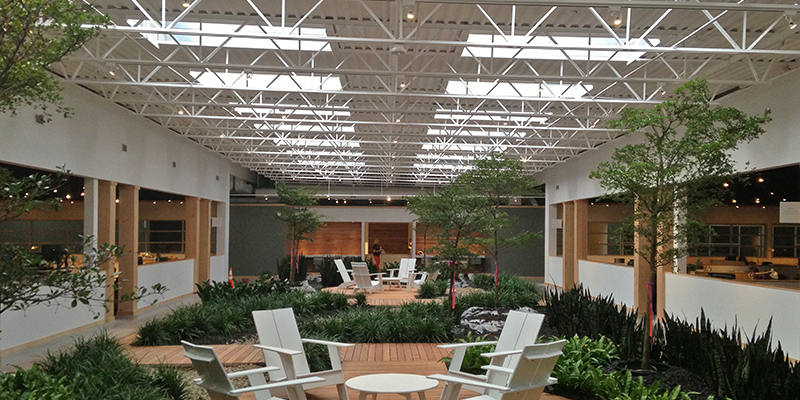Kirby Skylights with LED Lighting & Controls
Kirby prismatic skylights, when combined with energy-efficient LED lighting and controls, offer a higher opportunity for energy savings.
Kirby’s prismatic skylights enable building owners to dim or turned off electric lights for a portion of the day -making the interior more pleasant for occupants. LED lighting is the most efficient lighting technology available today. It is estimated by the U.S. Department of Energy that switching to LED lighting over the next two decades could reduce the electricity consumption for lighting by nearly one half. Helping to avoid 1,800 million metric tons of carbon emission.

LED Lighting & Lighting Controls with Kirby Prismatic Skylights
Maximum energy savings (up to 75%) are achieved when the lighting system is controlled by both daylighting and occupancy sensors. Experience has shown that in commercial buildings, the manual operation of lights is unreliable and thus an automatic system is required. Lighting systems in nonresidential buildings operate at full output regardless of outdoor conditions. On most days, however, daylight (sunlight through skylights and windows) can provide sufficient light levels for many activities. The results of not dimming electric lights include occupant eye strain due to excessive light levels and unnecessarily high electricity use for lighting and air-conditioning.
Daylighting with Lighting Control Systems offer Maximum Advantage
Lighting systems, skylights, windows and HVAC systems need to be designed to take maximum advantage of daylighting. When solar gains are at their highest, the building cooling system can be reduced in size because lights are dimmed to the minimum. Daylighting works best with indirect lighting because occupants are less likely to notice changes in electric light output.
Maximum energy savings (up to 75%) are achieved when the lighting system is controlled by both daylighting and occupancy sensors. Combining your prismatic skylights with energy efficient LED lighting and controls can potentially reduce your annual electric lighting energy consumption by 40-60%.